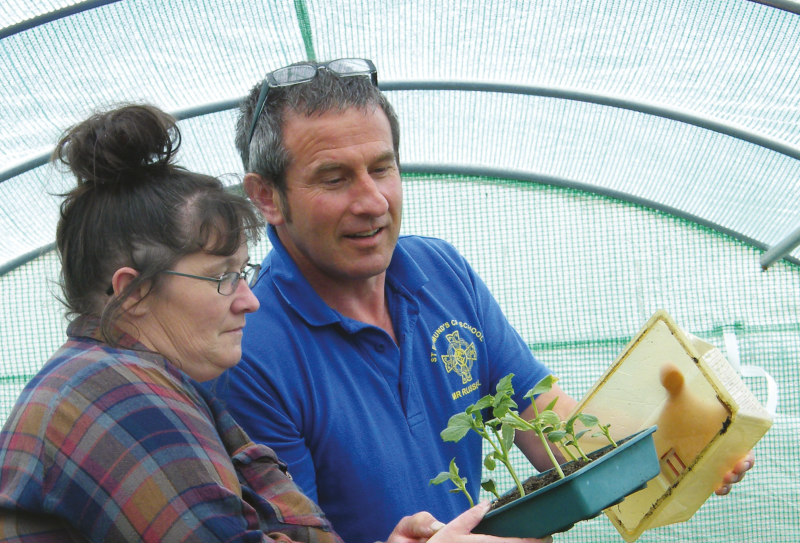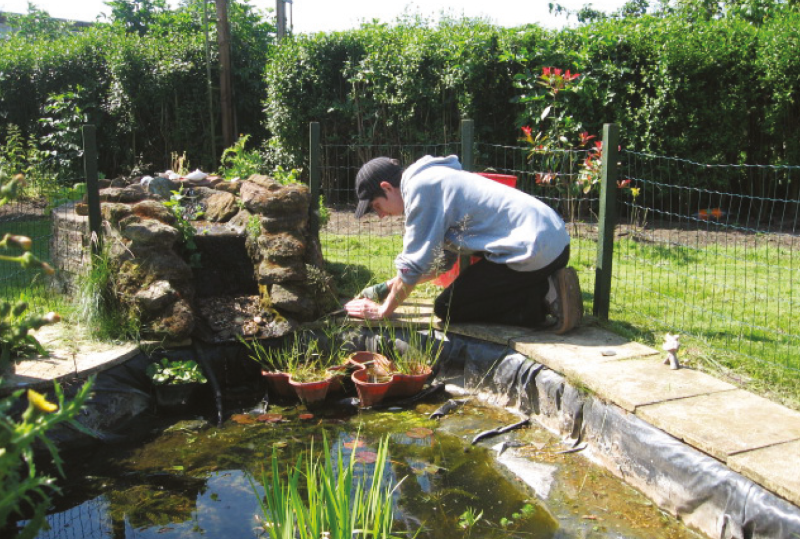- Latest NewsUp-to-date articles giving you information on best practice and policy changes.
- Model PoliciesA comprehensive set of templates for each statutory school policy and document.
- Skills AuditsEvaluate your skills and knowledge, identify gaps and determine training needs.
Engaging parents in their child's learning
What can you do to ensure that all families are able to engage with the school in a positive, constructive way? Nicola S Morgan shares tips on getting parents and carers actively involved in their children's learning process
 Parental involvement is not just a question of encouraging parents and carers to attend school concerts and sporting events. To have real impact, it means creating a culture of partnership where everyone works together to progress children’s learning.
Parental involvement is not just a question of encouraging parents and carers to attend school concerts and sporting events. To have real impact, it means creating a culture of partnership where everyone works together to progress children’s learning.
Some families welcome the opportunity to collaborate. Others fight shy, whether through lack of confidence in their own abilities, bad memories of their own schooldays, or anxiety that they will be made to feel inadequate because their child isn’t living up to the school’s expectations.
Put yourself in the parent’s shoes
To get parents in, you need to understand where they are coming from. If you get a little stuck with this, put yourself in their shoes and ask yourself: ‘What’s in it for me?’
For many parents, the answer will be that they are advancing their child’s education. But for others, especially in the context of SEND, there may be all sorts of other pressures in their lives that put them under enormous strain.
Asking that question makes a big difference. If you can really interact with the needs of the parent, then you are breaking down barriers and getting them engaged.
Watch your language
When you send out information about the curriculum, think carefully about how you present it. Some parents may have poor literacy skills or speak English as a second language. Chunks of dense text peppered with educational jargon will exclude them rather than drawing them in.
One way of guarding against this is to get together a group of parents who check the readability of all such documents before they go out. They could also help to co-produce the brochure for new parents. Their insights into what prospective parents want to know and their ability to communicate in a parent-friendly way will help to make this an accessible, welcoming introduction to the school.
Set the scene
Knowing what to expect goes a long way towards making school less daunting
Send pupils off to take pictures and videos of different parts of the school (taking care to comply with your school’s photo-taking policy) and put these together to create a guided tour. Post this online and tweet the link to prospective parents, inviting them to take a look.
Knowing what to expect before you set foot in an unfamiliar environment goes a long way towards making the experience less daunting. It is the sort of strategy we use with pupils who have autism. What if some of your new parents have autism too?
Support home learning
Some primary schools compile little story packs to encourage parents to read and talk with their child at home. Research by Margaret K. Merga shows that reading aloud to children has a profound effect on achievement and other aspects of their development. But what if the parent doesn’t have the necessary skills?
Our Family Values Scheme addresses this by bringing the whole family together to share simple activities that instantly get everyone talking. A family SEAL programme is another way of supporting quality parent-child interaction.
If you are sending home curriculum materials that involve reading – be that early years or a GCSE level text – parents who lack confidence can access a whole database of audio files on Storynory and BBC Radio Schools. Send them three questions to frame their discussion with their child as they listen together.
Identify the child’s wider network
Get the child to write down a list of the adults in their lives, such as relatives, neighbours or family friends, and send this home to make sure their parents or carers are happy for these people to engage with their child’s education.
When there’s an event coming up, ask the child to identify who on their list might be free if their parents can’t make it. Then get them to write a note. ‘Dear Nan, Please can you come to my school’s literacy evening on Wednesday? I’d really like you to be there.’ Presented with a personal invitation of this kind, how can Nan refuse?
The same approach can be used for homework. What you are doing is focusing children’s attention on the availability of other adults in their lives rather than going to Mum all the time and being told she’s too busy. The child then loses confidence and thinks: ‘What’s the point? I never get help with my homework, so I’m not going to bother.’
Make educational events irresistible
They built dens, made a fire, cooked sausages and then gathered round the fire to read stories
When we launched Family Values, rather than putting on a formal presentation, we ran a bingo night. The hall was filled to overflowing with people enjoying themselves and during the breaks we explained what the scheme was all about and why we hoped they would all join in.
Gareth Malone took a similar approach when he organised a camping night out for fathers and sons in the BBC programme Gareth Malone’s Extraordinary School for Boys. They built dens, made a fire, cooked sausages and then gathered round the fire to read stories. Yet earlier in the episode, an invitation to fathers to come into school to talk about reading attracted six people, and only two of them were dads. In other words, be creative. Ask the question: ‘What’s in it for me?’ The prospect of a homily on literacy at the end of a long hard day may not cut the mustard.
Encourage parents to volunteer
Another approach that gives parents an incentive to engage is Time Credits. Run by a social enterprise called Tempo, it operates nationwide, although it is stronger in some areas than others as its network of partners is still
growing.
The concept is simple. For each hour that someone gives to their community, in this case the school, they earn a Time Credit. They can volunteer in whatever way they choose and save up their tokens for a special event, such as a family trip to the cinema or a day out at an adventure park – it’s entirely up to them and depends on what is available in their area.
Some schools fund this through the pupil premium, or the Pupil Deprivation Grant in Wales. It’s easy to see why. The impact it can have on the self-confidence and self-esteem of ‘hard-to-reach’ parents has repercussions that reverberate far beyond the particular aspect of school life they choose to support.
 Parents at St Edmund’s Community Foundation School in Norfolk have volunteered over 2,500 hours of their time for the benefit of the school and the wider community. Their contributions have taken many different forms, from tending the school garden to decorating classrooms, reading with children, running the breakfast club, helping out on school trips, afterschool clubs and school discos… and much more besides. The group has also organised fundraising activities which have raised £10,000 for the school.
Parents at St Edmund’s Community Foundation School in Norfolk have volunteered over 2,500 hours of their time for the benefit of the school and the wider community. Their contributions have taken many different forms, from tending the school garden to decorating classrooms, reading with children, running the breakfast club, helping out on school trips, afterschool clubs and school discos… and much more besides. The group has also organised fundraising activities which have raised £10,000 for the school.
Headteacher Lisa Cook comments that people she might not have expected to volunteer now ‘feel really valued and you see them walking that little bit taller.’ Three members of the gardening club have subsequently gone on to find employment, an achievement they attribute to their participation in the scheme.
Measure the impact of your initiatives
A simple way to evaluate how well you are doing is to download the Ofsted questionnaire and get parents to answer it, draw up a parental involvement policy, and then reissue the questionnaire some time later.
A more robust way is to enter for a Leading Parent Partnership Award (LPPA). The framework this provides will support you to develop and embed a deeper, more far-reaching policy that allows you to forge ever stronger partnerships with the people who know your pupils best – their families.
Find out more
- The Family Values Scheme centres on 22 values, such as honesty, courage, tolerance, trust and patience. Each provides the focus for a pack of activities which encourage the whole family to engage in fun activities at home at times that suit them and don’t interfere with other commitments. Relatives who live nearby are encouraged to join in and there are monthly mega-challenges and awards.
- Better Behaviour Through Home-School Relations: Using values-based education to promote positive learning by Gill Ellis, Nicola S. Morgan and Ken Reid.
- The Impact of Parental Involvement on Academic Achievement by Sylvia A.Cole
- Closing the achievement gap: the critical importance of parental engagement
This article is taken from Special Children Magazine, issue 224. PDF versions of the magazines are available to download in the My Account area under My Magazines for subscribers of the Knowledge Centre and Premium CPD.
Last Updated:
18 Apr 2019


